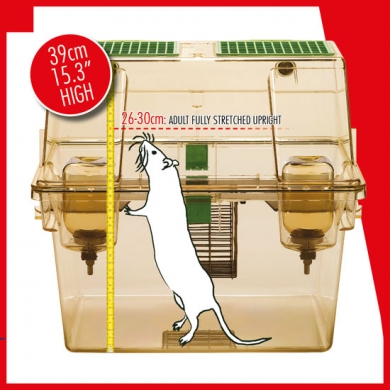

Whilst the majority of the industry survey respondents do not socially house telemetered rats on recording days, there are opportunities for adoption of this refinement within industry and academia worldwide. This article show how companion animals can be used in rat telemetry studies improving animals' welfare without adversely affecting the detection of drug-induced cardiovascular changes.
The article underlines how the use of double-decker cages is also technically possible in rat telemetry studies allowing socially housed rats to exhibit periods of full upright posture known to be an integral and important part of a rat's welfare.
This interesting article titled “Social-housing and use of double-decker cages in rat telemetry studies” has been published on the Journal of Pharmacological and toxicological Methods 96 (2019) 87-94. The article describes how Rat telemetry is widely used for biomedical research purposes and is used routinely in early pre-clinical drug development to screen for the potential cardiovascular risk of candidate drugs.
Historically, these studies have been conducted in individually housed conditions which can impact significantly on an animal's welfare. The authors of this article present data from a survey of pharmaceutical companies and contract research organisations to define current industry practices relating to the housing of rats during telemetry studies and to expand and complement a similar project in non-rodents.
Results of the survey showed that 75% of respondents socially house rats on non-recording days of telemetry studies, whereas on recording days only 46% of respondents socially house the animals. When social housing is used on rat telemetry studies, rats are usually housed with an unrecorded companion animal. The authors also present and compare data from a telemetry study in standard individually ventilated cages (IVCs) with a study using new double-decker IVCs, both conducted using a companion animal approach. Telemetry signals were successfully collected from the double-decker IVCs without a loss of signal quality whilst offering a more spacious environment that allowed the animals to exhibit natural behaviours including full upright posture. Cardiovascular responses following pharmacological intervention with verapamil were similar when assessed in the standard and double-decker cages.
Power analysis was conducted on pooled data from the studies in socially housed animals with preliminary results showing the power of detection of drug-induced effects is equivalent to previously published data in individually housed rats. This illustrates that telemetry recordings can be made from rats in socially housed conditions within standard or larger double-decker cages for the for the collection of cardiovascular telemetry data.